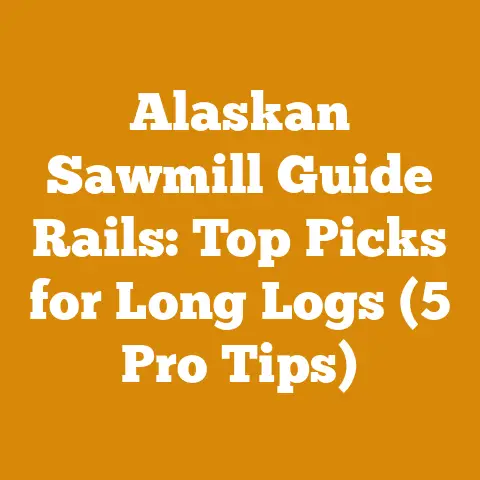How to Use Stump Grinder Tips (Pro Arborist Gear Insights)
My goal in this article is to equip you with the knowledge and practical skills necessary to master stump grinding, elevating your arborist game and boosting your efficiency on every job. I’ll share insider tips, professional gear insights, and the lessons I’ve learned from years of experience in the field. Let’s dive in!
How to Use a Stump Grinder: Tips from a Pro Arborist
Stump grinding. It sounds simple, right? Just point the machine at the stump and make it disappear. But, like most things in the world of arboriculture, there’s a right way and a… well, less efficient, more dangerous way. I’ve been grinding stumps for over 20 years, and I’ve seen it all – from flying debris injuries (thankfully not too serious) to burned-out machines. I’m here to share my hard-earned wisdom, so you can avoid those pitfalls and become a true stump-grinding maestro.
Understanding Your Stump Grinder: The Key to Success
Before you even think about firing up that engine, you need to know your machine. There are different types of stump grinders, each with its own strengths and weaknesses.
- Walk-Behind Stump Grinders: These are the workhorses of the industry, perfect for most residential jobs. They’re relatively easy to maneuver and powerful enough to tackle a wide range of stump sizes.
- Tow-Behind Stump Grinders: For larger stumps and more demanding jobs, a tow-behind grinder is the way to go. They offer more power and stability but require a vehicle with a tow hitch.
- Self-Propelled Stump Grinders: These are the luxury models, offering superior maneuverability and power. They’re ideal for professionals who grind stumps regularly.
- Mini Stump Grinders: Compact and lightweight, these are perfect for tight spaces and smaller stumps.
The Teeth Tell the Tale: The teeth on your stump grinder are your primary cutting tools. They need to be sharp and in good condition to work effectively. Dull teeth will not only slow you down but also put unnecessary strain on the machine and increase the risk of kickback.
- Carbide-Tipped Teeth: These are the most common type of teeth, offering a good balance of durability and performance.
- Diamond-Tipped Teeth: These are the premium option, providing exceptional cutting power and longevity. However, they’re also more expensive.
Safety First, Always: Stump grinding is inherently dangerous. Flying debris, kickback, and the sheer power of the machine can all lead to serious injury. Here’s a checklist of essential safety gear:
- Eye Protection: Safety glasses or a face shield are non-negotiable.
- Hearing Protection: Stump grinders are loud. Protect your hearing with earplugs or earmuffs.
- Gloves: Protect your hands from splinters and debris.
- Long Pants and Sleeves: Cover your skin to minimize the risk of cuts and abrasions.
- Steel-Toed Boots: Protect your feet from falling objects and accidental contact with the grinding wheel.
Personal Story: I once saw a guy grinding a stump in flip-flops and shorts. He ended up with a nasty gash on his leg from a flying rock. It was a painful reminder that safety gear is not optional.
Prepping the Stump: A Little Effort Goes a Long Way
Proper preparation can significantly speed up the grinding process and reduce the risk of problems.
- Clear the Area: Remove any rocks, debris, or other obstacles from around the stump. This will prevent damage to the machine and reduce the risk of flying debris.
- Expose the Root Flare: Use a shovel to dig around the base of the stump and expose the root flare. This will make it easier to grind the stump below ground level.
- Cut the Stump Down: If the stump is particularly tall, use a chainsaw to cut it down to a manageable height (ideally, no more than 12 inches above ground level). This will reduce the amount of material you need to grind.
Data Point: According to the Tree Care Industry Association (TCIA), proper site preparation can reduce stump grinding time by up to 20%.
The Grinding Process: Technique and Efficiency
Now for the main event: actually grinding the stump. Here’s my tried-and-true method:
- Position the Grinder: Place the grinder in front of the stump, ensuring that the grinding wheel is aligned with the center of the stump.
- Engage the Cutting Wheel: Slowly engage the cutting wheel and begin grinding the stump from side to side. Use a sweeping motion to cover the entire surface of the stump.
- Lower the Wheel Gradually: As you grind, gradually lower the wheel to grind the stump below ground level. Aim to grind the stump at least 6-8 inches below the surface to allow for replanting or landscaping.
- Grind the Root Flare: Once you’ve ground the main part of the stump, focus on grinding the root flare. This is where the roots extend out from the base of the stump.
- Backfill the Hole: Once you’ve finished grinding, backfill the hole with the grindings and topsoil. Compact the soil to prevent settling.
Technique Matters: Don’t try to take off too much material at once. This will bog down the machine and increase the risk of kickback. Instead, take small, controlled passes.
Tip: I find that using a garden hose to wet the stump as I grind helps to reduce dust and keep the teeth cool.
Personal Story: I once tried to grind a massive oak stump without properly preparing the area. I ended up hitting a hidden rock, which shattered one of the teeth and sent a shower of sparks flying. It was a costly mistake that could have been avoided with a little more preparation.
Stump Grinder Maintenance: Keeping Your Machine in Top Shape
A well-maintained stump grinder is a safe and efficient stump grinder. Here are some essential maintenance tasks:
- Sharpen the Teeth Regularly: Dull teeth are the enemy of efficient grinding. Sharpen the teeth regularly using a diamond grinding wheel or a specialized tooth sharpener.
- Check the Belts: Inspect the belts for wear and tear. Replace them as needed.
- Grease the Bearings: Keep the bearings well-greased to prevent premature wear.
- Change the Oil: Change the engine oil according to the manufacturer’s recommendations.
- Clean the Air Filter: A dirty air filter can reduce engine performance. Clean it regularly.
Data Point: According to a study by the Equipment Dealers Association, regular maintenance can extend the lifespan of a stump grinder by up to 30%.
Optimizing Your Workflow: Efficiency is Key
In the world of arboriculture, time is money. Here are some tips for optimizing your stump grinding workflow:
- Plan Your Route: Group your jobs geographically to minimize travel time.
- Prepare Multiple Stumps at Once: If you have multiple stumps to grind on a single property, prepare them all at once before starting the grinding process.
- Use a Stump Grinder Attachment: Consider using a stump grinder attachment for your skid steer or excavator. This can significantly increase your productivity.
- Hire an Assistant: If you’re grinding stumps regularly, consider hiring an assistant to help with site preparation, cleanup, and other tasks.
Case Study: I once worked on a large project involving the removal of dozens of trees and stumps. By carefully planning my route and preparing multiple stumps at once, I was able to complete the project in half the time it would have taken me otherwise.
Dealing with Difficult Stumps: Challenges and Solutions
Not all stumps are created equal. Some are harder to grind than others. Here are some common challenges and solutions:
- Large Stumps: For extremely large stumps, consider using a larger stump grinder or hiring a professional stump grinding service.
- Stumps Near Obstacles: Grinding stumps near fences, buildings, or other obstacles can be tricky. Use caution and take small, controlled passes.
- Stumps with Rocks or Debris: As mentioned earlier, clear the area around the stump before grinding. If you encounter rocks or debris during the grinding process, stop and remove them.
- Stumps with Underground Utilities: Before grinding any stump, call your local utility companies to locate any underground utilities.
Tip: If you’re grinding a stump near a building, cover the building with tarps to protect it from flying debris.
The Business of Stump Grinding: Pricing and Marketing
If you’re looking to turn your stump grinding skills into a business, here are some tips for pricing and marketing your services:
- Research Your Market: Find out what other stump grinding services in your area are charging.
- Consider Your Costs: Factor in your equipment costs, labor costs, insurance costs, and other expenses.
- Set a Competitive Price: Set a price that is competitive but also allows you to make a profit.
- Market Your Services: Promote your services online, in local newspapers, and through word-of-mouth.
Personal Story: When I first started my stump grinding business, I made the mistake of underpricing my services. I quickly realized that I wasn’t making enough money to cover my expenses. I had to raise my prices to stay in business.
Sustainable Stump Grinding: Protecting the Environment
As arborists, we have a responsibility to protect the environment. Here are some tips for sustainable stump grinding:
- Use Biodegradable Oil: Use biodegradable oil in your stump grinder to minimize the risk of pollution.
- Recycle the Grindings: Use the grindings as mulch or compost.
- Plant New Trees: Encourage your clients to plant new trees to replace the ones that were removed.
Data Point: According to the International Society of Arboriculture (ISA), planting trees is one of the most effective ways to combat climate change.
Advanced Techniques and Specialized Gear
Once you’ve mastered the basics, you can start exploring advanced techniques and specialized gear.
- Stump Grinder Teeth with Enhanced Durability: Look for teeth made from advanced materials that offer increased wear resistance and cutting power.
- Remote-Controlled Stump Grinders: These machines allow you to operate the grinder from a safe distance, which is particularly useful for grinding stumps in hazardous locations.
- Stump Grinder Mulchers: These attachments turn the grindings into fine mulch, which can be used for landscaping or erosion control.
Tip: Attend industry conferences and workshops to learn about the latest advances in stump grinding technology.
Troubleshooting Common Stump Grinding Problems
Even with the best preparation and technique, you may encounter problems while grinding stumps. Here are some common issues and solutions:
- Stump Grinder Won’t Start: Check the fuel level, spark plug, and air filter.
- Stump Grinder Bogs Down: Reduce the amount of material you’re trying to grind at once.
- Stump Grinder Kicks Back: Use caution and take small, controlled passes.
- Teeth Break or Chip: Sharpen the teeth regularly and avoid hitting rocks or other debris.
Personal Story: I once had a stump grinder that kept bogging down, no matter what I did. After troubleshooting for hours, I finally discovered that the fuel line was partially clogged. A simple cleaning fixed the problem.
The Future of Stump Grinding: Innovation and Technology
The stump grinding industry is constantly evolving. New technologies and techniques are emerging all the time.
- Electric Stump Grinders: Electric stump grinders are becoming increasingly popular due to their quiet operation and zero emissions.
- GPS-Guided Stump Grinders: GPS technology can be used to guide stump grinders, allowing for precise and efficient grinding.
- Robotic Stump Grinders: Robotic stump grinders are still in their early stages of development, but they have the potential to revolutionize the industry.
Tip: Stay up-to-date on the latest trends in stump grinding by reading industry publications and attending trade shows.
Legal Considerations and Regulations
Before you start a stump grinding business, it’s important to understand the legal considerations and regulations in your area.
- Business Licenses: Obtain any necessary business licenses and permits.
- Insurance: Carry adequate liability insurance to protect yourself from accidents and injuries.
- Environmental Regulations: Comply with all applicable environmental regulations.
Data Point: According to the Small Business Administration (SBA), it’s essential to consult with an attorney and an accountant before starting any business.
The Ethical Arborist: Responsibility and Integrity
As arborists, we have a responsibility to act ethically and with integrity.
- Be Honest with Your Clients: Provide accurate estimates and avoid overcharging.
- Respect Your Clients’ Property: Take care to protect their property from damage.
- Dispose of Waste Properly: Dispose of waste materials in an environmentally responsible manner.
Personal Story: I once had a client who asked me to grind a stump on their neighbor’s property without their permission. I refused to do it, explaining that it was unethical and potentially illegal.
Stump Grinding Safety: A Detailed Guide
Stump grinding is a dangerous activity, and it’s essential to take all necessary safety precautions.
- Wear Appropriate Safety Gear: As mentioned earlier, always wear eye protection, hearing protection, gloves, long pants and sleeves, and steel-toed boots.
- Inspect the Machine: Before each use, inspect the machine for any damage or defects.
- Clear the Area: Clear the area around the stump of any rocks, debris, or other obstacles.
- Keep Bystanders Away: Keep bystanders at a safe distance from the grinding area.
- Use Caution on Slopes: Use extra caution when grinding stumps on slopes.
- Never Operate the Machine Under the Influence: Never operate the machine under the influence of alcohol or drugs.
Tip: Take a first aid and CPR course to be prepared for emergencies.
Case Studies: Real-World Stump Grinding Projects
Let’s take a look at some real-world stump grinding projects to see how these strategies are applied in practice.
- Residential Stump Removal: A homeowner hired me to remove a large oak stump from their backyard. I carefully prepared the area, ground the stump below ground level, and backfilled the hole with topsoil. The homeowner was thrilled with the results.
- Commercial Stump Removal: A construction company hired me to remove dozens of stumps from a development site. I used a combination of walk-behind and tow-behind stump grinders to complete the project efficiently and safely.
- Municipal Stump Removal: A city hired me to remove stumps from a park. I used sustainable stump grinding practices, including using biodegradable oil and recycling the grindings.
Data Point: According to a study by the National Arbor Day Foundation, trees provide numerous benefits to communities, including cleaner air and water, reduced energy consumption, and increased property values.
The Art of Stump Grinding: More Than Just a Job
Stump grinding is more than just a job; it’s an art. It requires skill, precision, and attention to detail. It’s about transforming an unsightly stump into a clean, level surface that can be used for replanting or landscaping.
Personal Story: I once had a client who told me that the stump I ground was “a work of art.” It was a rewarding feeling to know that I had not only removed the stump but also created something beautiful.
Stump Grinding and Wood Recycling
Stump grinding produces a significant amount of wood chips. Instead of simply discarding these chips, consider recycling them.
- Mulch: Stump grindings make excellent mulch for gardens and landscaping. They help to retain moisture, suppress weeds, and improve soil health.
- Compost: Stump grindings can be added to compost piles to create nutrient-rich soil amendments.
- Fuel: In some areas, stump grindings can be used as fuel for biomass power plants.
Data Point: According to the U.S. Environmental Protection Agency (EPA), recycling wood waste can help to reduce greenhouse gas emissions and conserve natural resources.
The Importance of Customer Service
In the stump grinding business, customer service is paramount.
- Be Punctual: Arrive on time for appointments.
- Be Professional: Dress appropriately and treat your clients with respect.
- Be Responsive: Respond promptly to phone calls and emails.
- Be Flexible: Be willing to work with your clients to meet their needs.
- Be Honest: Be honest about your capabilities and limitations.
Personal Story: I once had a client who was extremely unhappy with the work of another stump grinding service. I went out of my way to provide excellent service and exceed their expectations. They became a loyal customer and referred me to many other people.
Expanding Your Arborist Skills: Beyond Stump Grinding
Stump grinding is just one aspect of arboriculture. To become a well-rounded arborist, consider expanding your skills in other areas, such as:
- Tree Pruning: Learn how to prune trees safely and effectively.
- Tree Removal: Learn how to remove trees safely and efficiently.
- Tree Planting: Learn how to plant trees properly.
- Tree Diagnosis: Learn how to diagnose tree diseases and pests.
Data Point: According to the ISA, certified arborists are more likely to be hired and earn higher salaries than non-certified arborists.
The Joy of Arboriculture: A Rewarding Career
Arboriculture is a rewarding career that allows you to work outdoors, help the environment, and make a difference in your community.
Personal Story: I’ve been an arborist for over 20 years, and I can’t imagine doing anything else. I love working with trees, and I’m proud to be part of an industry that is dedicated to protecting our environment.
Conclusion: Take Your Stump Grinding Skills to the Next Level
Stump grinding is a skill that can be mastered with practice and dedication. By following the tips and techniques outlined in this article, you can become a confident and efficient stump grinder. Remember to always prioritize safety, maintain your equipment properly, and strive to provide excellent customer service. The key takeaways are:
- Safety is paramount: Always wear appropriate safety gear and follow safety procedures.
- Preparation is essential: Clear the area around the stump and prepare the stump properly before grinding.
- Maintenance matters: Keep your stump grinder well-maintained to ensure optimal performance and longevity.
- Efficiency is key: Optimize your workflow to minimize time and maximize productivity.
- Customer service is crucial: Provide excellent customer service to build a loyal customer base.
Next Steps:
- Practice: Practice your stump grinding skills on small, easy stumps before tackling larger, more challenging ones.
- Invest in Quality Equipment: Invest in high-quality stump grinding equipment that is durable and reliable.
- Seek Training: Attend industry conferences and workshops to learn about the latest advances in stump grinding technology.
- Network with Other Arborists: Network with other arborists to share knowledge and learn from their experiences.
- Stay Informed: Stay up-to-date on the latest trends and best practices in stump grinding.
By following these steps, you can take your stump grinding skills to the next level and become a successful arborist. Now, go out there and grind those stumps with confidence!






